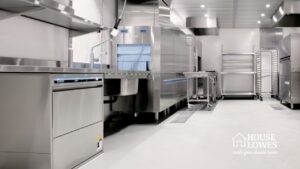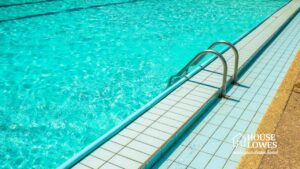As the vibrant colors of fall emerge and temperatures begin to dip, many pool owners assume their swimming days are over. But with the right heating solution, your pool can remain a warm, inviting retreat well into autumn—and even early winter. Extending your swim season isn’t just about comfort; it’s about maximizing your investment and enjoying more quality time with family and friends. From solar covers to high-efficiency heat pumps, here’s a guide to the best heating options that let you make the most of your pool during the cooler months.
Solar Covers: The Affordable First Step
Before investing in mechanical heating, start with a solar cover—also known as a solar blanket. These lightweight, bubble-like sheets trap heat from the sun and reduce evaporation, which is responsible for up to 70% of heat loss in pools. A good-quality solar cover can raise water temperature by 8–12°F over several days and maintain warmth overnight.
They’re especially effective in early fall when the daytime sun is still intense. Plus, they’re inexpensive, easy to use, and help keep debris out—reducing the need for cleaning and chemical use.
Pro Tip: Pair your solar cover with a solar reel system for quick deployment and storage, especially in larger pools.
Solar Heating Panels: Harness the Sun’s Power
For a more permanent solution, solar heating panels use rooftop or ground-mounted collectors to circulate pool water through a system warmed by sunlight. These panels work best in regions with consistent fall sunshine and can extend your swim season by 6–8 weeks.
Once installed, solar panels have minimal operating costs and are environmentally friendly. While the upfront cost ranges from $3,000 to $7,000, many areas offer rebates or tax incentives for solar pool heating.
Best For: Homeowners in sunny climates who want a sustainable, long-term heating option.
Heat Pumps: Efficient and Reliable Warmth
Pool heat pumps are among the most popular and efficient ways to maintain comfortable water temperatures in the 60s and 70s. They work by extracting heat from the surrounding air and transferring it to the pool water—using electricity, but very efficiently.
Modern heat pumps can operate effectively in air temperatures as low as 50°F, making them ideal for fall use. They typically cost more upfront than gas heaters but have lower operating costs and longer lifespans (10+ years with proper care).
Top Brands: Look for models from reputable manufacturers like AquaCal, Hayward, or Pentair. If you need replacement parts or upgrades, Aquacal pool parts from Vita Pool Supply offer genuine components that ensure optimal performance and compatibility.
Gas Heaters: Fast, Flexible Heating
Gas heaters (propane or natural gas) are perfect for quickly heating your pool—say, for a weekend gathering. Unlike heat pumps, they aren’t dependent on ambient air temperature, so they work well even in cooler fall evenings.
While gas heaters have higher operating costs and a shorter lifespan (5–7 years), their ability to deliver rapid heating makes them a favorite for occasional use or in regions with unpredictable fall weather.
Ideal For: Short swim sessions, entertaining guests, or areas with frequent cool snaps.
Pool Enclosures and Windbreaks: Retain Heat Naturally
Sometimes, the best way to keep your pool warm isn’t to add heat—but to keep it from escaping. Installing a pool enclosure, retractable awning, or windbreak (like a privacy fence or hedge) reduces heat loss from wind and cool air. Enclosures act like greenhouses, trapping solar heat during the day and maintaining warmth at night. They also allow for year-round use in milder climates and provide added safety and bug protection.
Combining Strategies for Maximum Efficiency
For the longest swim season, combine multiple methods:
- Use a solar cover every night
- Install a heat pump for consistent warmth
- Add a windbreak to reduce cooling
- Run the heater during the day when air temperatures are higher
This layered approach reduces energy use and keeps water comfortably between 78°F and 82°F—the ideal range for most swimmers.
When to Stop Heating
Even with the best systems, there comes a point when heating becomes impractical. Once average daytime temperatures consistently fall below 50°F, heat pumps become less effective, and energy costs rise. At that stage, it’s time to properly winterize your pool—drain the equipment, balance the water, and cover it securely.
Fall doesn’t have to mean the end of pool season. With smart heating choices—from solar covers to high-efficiency heat pumps—you can enjoy your backyard oasis for weeks or even months longer. Whether you’re relaxing after work, hosting a weekend gathering, or helping kids squeeze in a few more laps, a heated pool adds value, comfort, and joy to your home.
And when it’s time to maintain or upgrade your system, trusted suppliers like Vita Pool Supply ensure you can find the Aquacal pool parts you need to keep your equipment running smoothly. With the proper preparation and equipment, your pool isn’t just a summer luxury—it’s a year-round retr
Admin Recommendation
Durable & Stylish Bronze Metal Roof – Your Complete Guide







